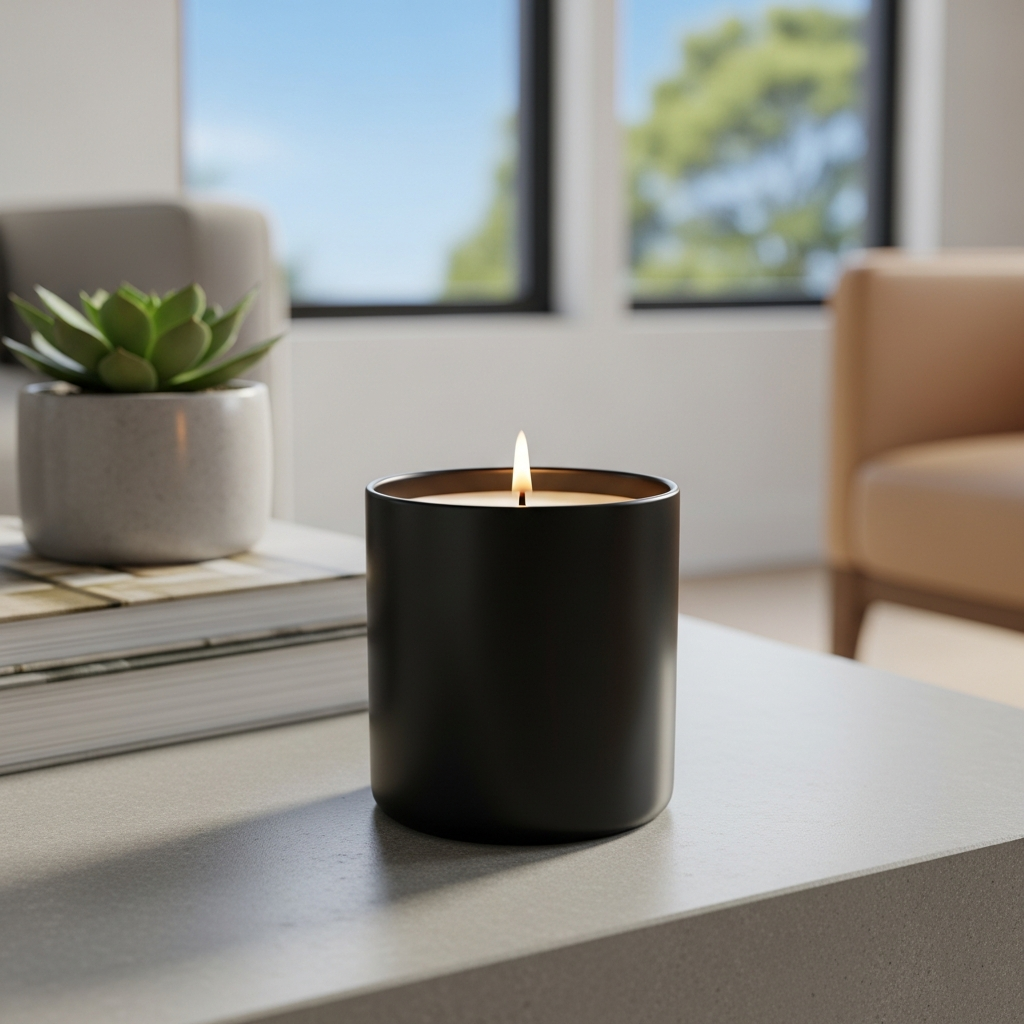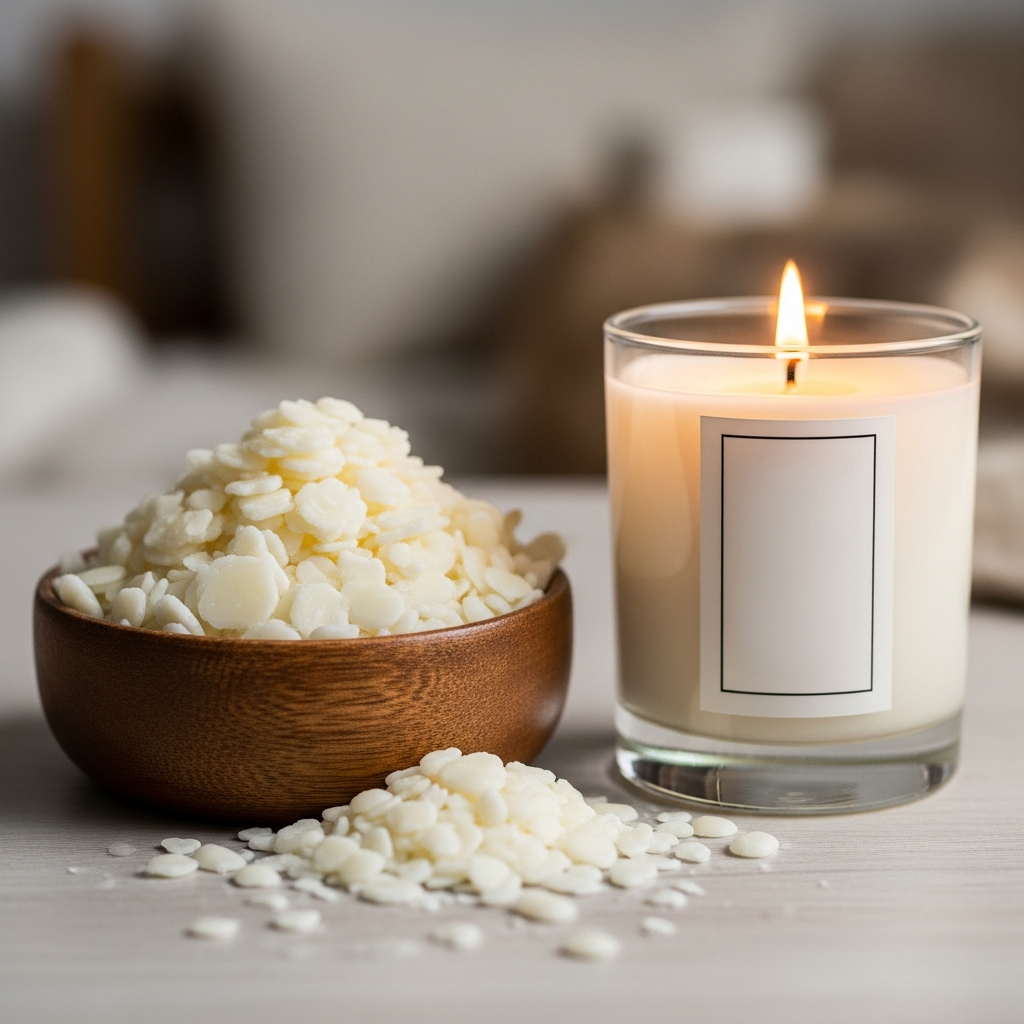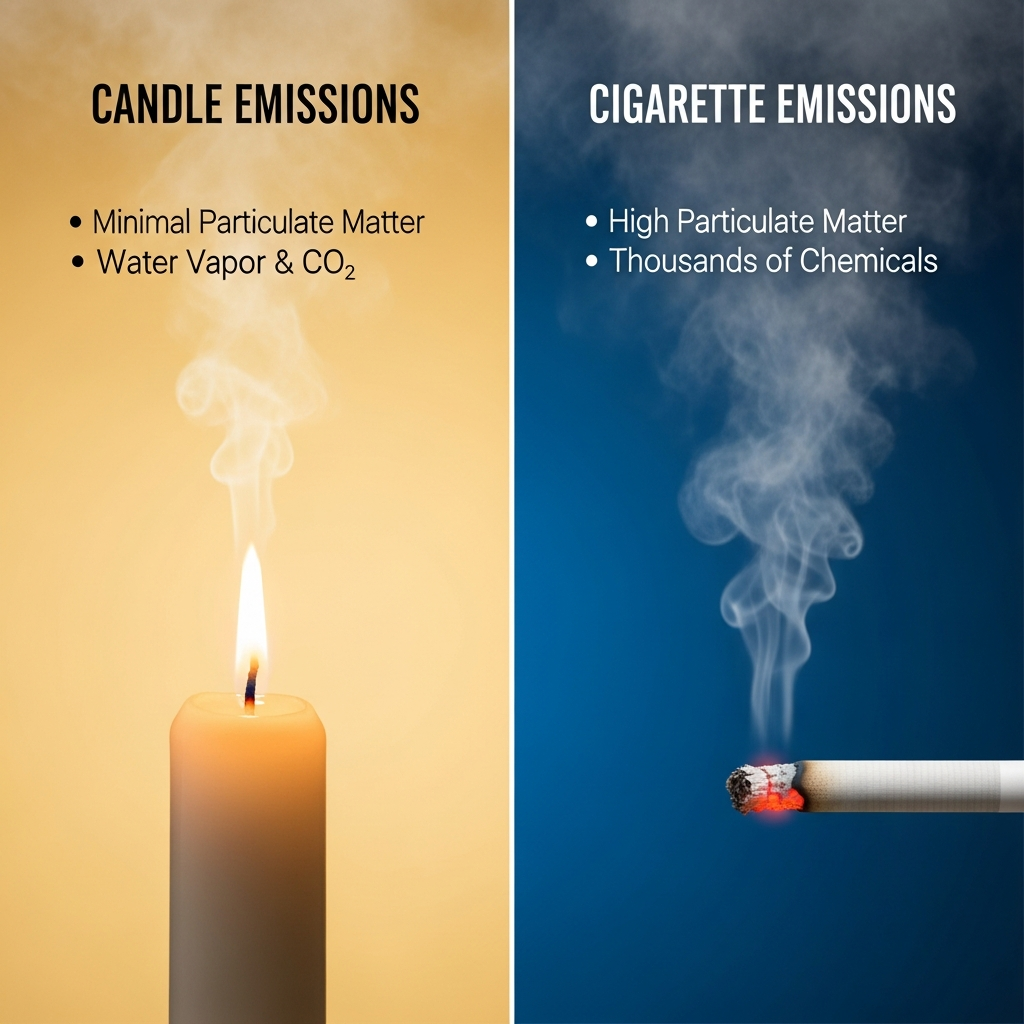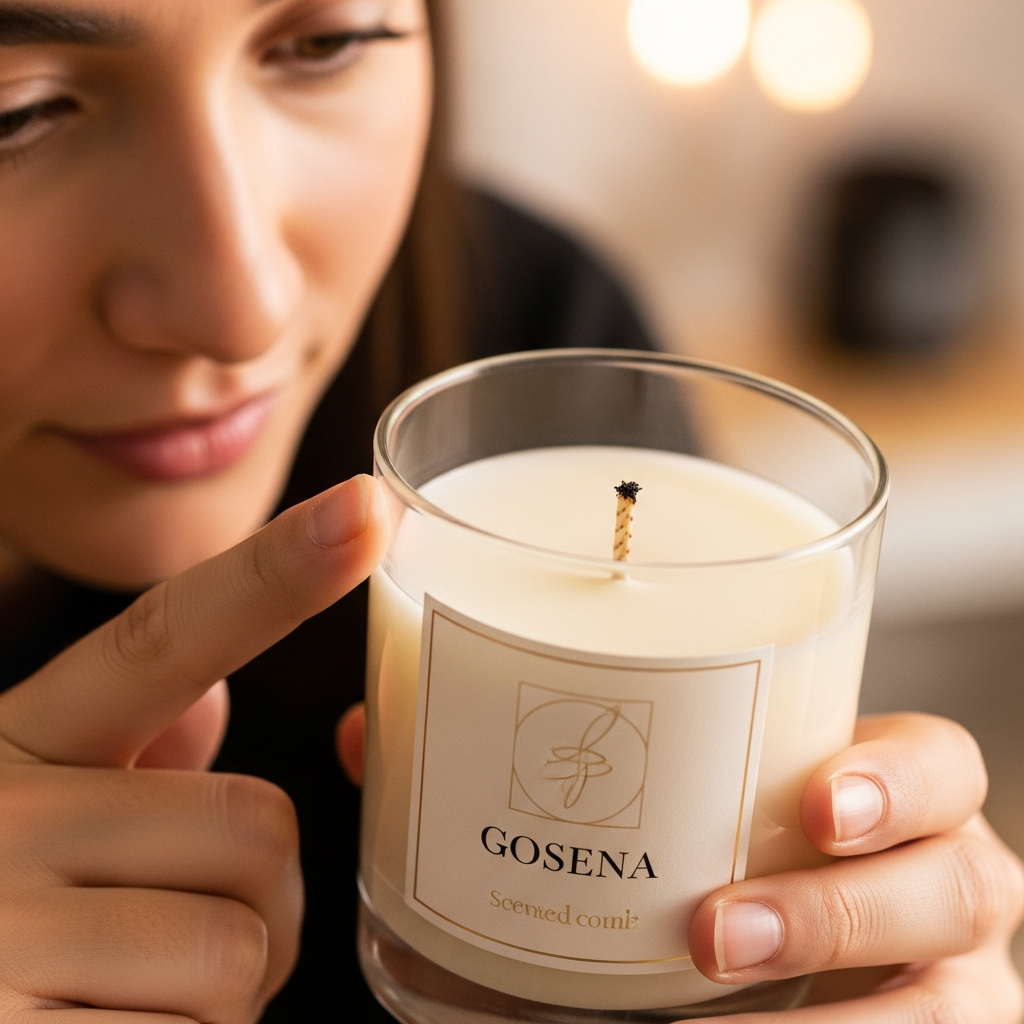Worried your favorite candle is releasing toxins? You want a cozy home, not polluted air. I'll explain what makes a candle safe, so you can breathe easy.
No, high-quality scented candles are not bad for you. When made with natural waxes1 like soy or coconut and high-quality, compliant fragrances2, they are perfectly safe for home use. The key is choosing well-made products from trusted sources.

The internet is full of scary headlines about candles. But as someone who has spent over a decade making them, I want to separate fact from fiction. I work with brand managers every day who need to be sure the products they launch are safe and compliant. Let's look closer at the common questions I get. It’s important to understand the details.
Are scented candles bad for your health?
You hear stories about toxic fumes3 from candles. It makes you question if they are healthy. I'll show you why the quality of materials is what really matters for your health.
No, well-made scented candles are not bad for your health. The key is using natural waxes1 and fragrances that meet safety standards4 like IFRA. Paraffin wax and low-quality oils are the real culprits behind health concerns.

The health impact of a candle5 comes down to its ingredients. For over ten years, I've focused on sourcing the best materials for my clients. The difference between a "good" candle and a "bad" one is clear.
Wax is the Foundation
The biggest factor is the wax. Many mass-market candles use paraffin wax6, which is a byproduct of petroleum. When burned, it can release compounds like benzene and toluene, which are known carcinogens. This is where most of the negative health claims come from. At my facility, we use natural waxes1 like soy, coconut, and beeswax. They are renewable, burn cleaner, and produce almost no soot. A soy wax candle, for example, burns cleanly and leaves no residue, which is better for your home and your health.
Fragrance Quality is Crucial
The term "fragrance" can hide a lot. Low-quality fragrance oils7 might contain harmful phthalates8 or other chemicals not meant to be burned. We partner with top fragrance houses to source high-quality oils. These oils are composed of many natural ingredients and are formulated specifically for safe use in candles. They meet strict international safety standards4, ensuring they don't release harmful toxins when heated.
Are scented candles safe for lungs?
Concerned about breathing in soot and chemicals? You want to enjoy a beautiful scent, not damage your lungs. I will explain what makes a candle burn cleanly and safely.
Yes, high-quality scented candles9 are safe for your lungs when used correctly. A clean burn10 depends on natural wax, a properly sized wick, and high-grade fragrance oils7. This combination minimizes soot and airborne particles, making them safe to breathe.

When a brand manager asks me if our candles are safe for lungs, my answer is always a confident yes, because we control every part of the manufacturing process. It’s not just about the ingredients, but also how the candle is constructed.
The Role of the Wick
The wick is like the engine of the candle. A wick that is too large or contains a metal core (like lead, which is now banned in many countries but can still be found in cheap imports) will cause problems. It will burn too hot, creating a large, flickering flame that produces a lot of black soot. This soot is unburned carbon particles that can irritate your lungs. We only use 100% cotton or wood wicks11. We test different wick sizes for every candle vessel and fragrance combination to ensure the flame is stable and the wax pool melts evenly. A proper wick creates a clean burn10 with minimal soot.
Complete vs. Incomplete Combustion
A good candle achieves complete combustion12. This means the wax and fragrance are converted into water vapor and carbon dioxide, with very little else released. Incomplete combustion12 is what produces soot and smoke. You can see it happening when a candle flame flickers wildly or black smoke rises from the wick.
Here’s a simple table to show what a clean burn10 looks like:
| Feature | Clean Burn (Good Candle) | Sooty Burn (Bad Candle) |
|---|---|---|
| Flame | Steady, teardrop shape, calm | Large, flickering, unstable |
| Soot | Minimal to none | Black smoke, black residue on the jar |
| Wax Pool | Melts evenly across the surface | "Tunnels" down the center |
| Primary Cause | Natural wax, correct wick size | Paraffin wax, wrong wick, drafts |
To keep your lungs safe, always trim the wick to about 1/4 inch before each use and keep the candle away from drafts.
Are scented candles worse than cigarettes?
You see alarming articles comparing candle emissions13 to cigarettes. This creates fear about indoor air quality14. I'll put this comparison into perspective with real facts from the industry.
No, this comparison is completely misleading. A properly made scented candle releases trace amounts of compounds, far below safety limits. A single cigarette releases over 7,000 chemicals, including dozens of known carcinogens, in much higher concentrations. They are not in the same category.

This is one of the most damaging myths I have to debunk for clients. Equating a luxury home fragrance15 product with a cigarette is not just wrong, it's irresponsible. Let’s break down why.
A Matter of Scale and Substance
The core of this myth comes from studies that find similar types of chemicals in both candle and cigarette smoke, like formaldehyde or benzene. However, they ignore the quantity. The dose makes the poison. Scientific studies have shown that even with multiple candles burning for hours in an unventilated room, the levels of these chemicals remain far below the safety standards4 set by organizations like the World Health Organization. A cigarette, on the other hand, is designed to deliver a concentrated dose of addictive and harmful substances directly into the lungs. There is no comparison in terms of health risk.
The Purpose is Different
A cigarette is burned to be inhaled. A candle is burned to release fragrance into a room. The exposure level is fundamentally different. I've been in my 8,000 m² factory surrounded by fragrance and wax for years, and our air quality is constantly monitored. We operate under strict safety protocols because my team's health is my top priority. We create products that are meant to enhance a living space safely. The idea that we would produce something comparable to a cigarette is unthinkable. Any reputable manufacturer is committed to safety and compliance, creating products that bring joy, not harm.
How to tell if your candle is toxic?
You have candles at home but are now unsure if they are safe. You need simple ways to check their quality. I'll give you practical tips to identify a potentially toxic candle.
Look at the wax, wick, and label. A toxic candle often uses opaque, greasy paraffin wax6, may have a metal-core wick, and lacks ingredient or safety information. A strong, chemical-like smell when unlit is also a red flag.

As a manufacturer, I can spot a low-quality candle from across the room. I want to empower you and your customers to do the same. When I work with brand managers like Ava, I teach them what to look for so they can be confident in their product choices. Here are the key indicators.
Your Pre-Purchase Checklist
Before you even buy a candle, you can look for signs of quality.
- Check the Wax: Natural waxes like soy or coconut are typically softer and have a creamy appearance. Paraffin wax is harder, more opaque, and can feel slightly greasy. If the label doesn't say what wax it is, it's often paraffin.
- Inspect the Wick: A high-quality wick will look like simple braided cotton or a thin piece of wood. Be wary of wicks that seem to have a metal wire inside them. Bend the wick; if it stays bent, it might have a metal core.
- Read the Label: A reputable brand is transparent. Look for information on the wax type, fragrance origin (e.g., "phthalate-free"), and safety instructions. A lack of information is a bad sign.
- Smell the Scent (Cold Throw): When unlit, the scent should be pleasant and true to its description. If it has a sharp, chemical, or gasoline-like undertone, it’s likely made with low-grade fragrance oils7.
This checklist helps you identify potential issues before you bring a candle home.
| Sign of a Toxic Candle | Sign of a Quality Candle |
|---|---|
| Opaque, greasy-feeling paraffin wax6 | Creamy soy, coconut, or beeswax |
| Wick with a visible metal core | 100% cotton or natural wood wick |
| No ingredient or safety info | Clear labeling (wax type, phthalate-free) |
| Strong, chemical smell when unlit | Pleasant, true-to-description cold throw |
| Produces black soot while burning | Burns cleanly with a steady flame |
By looking for these simple signs, you can easily choose safer, higher-quality candles for your home or your brand.
Conclusion
In short, high-quality scented candles9 made from natural waxes1 and compliant fragrances2 are safe. Choose reputable brands and always follow basic candle safety to enjoy your favorite scents without worry.
Learn about the different types of natural waxes and their benefits for candle making and air quality. ↩
Understand the importance of compliant fragrances and how they ensure safety in scented candles. ↩
Explore the truth about toxic fumes from candles and how to choose safer options. ↩
Discover the safety standards that ensure the candles you use are safe for your health. ↩
Get insights into how different candle materials affect your health and indoor air quality. ↩
Find out why paraffin wax is considered harmful and what alternatives are available. ↩
Discover high-quality fragrance oils that enhance your candle experience without harmful effects. ↩
Understand the risks associated with phthalates in candles and how to avoid them. ↩
Discover why high-quality scented candles are a safe choice for your home and how they enhance your environment. ↩
Learn what a clean burn is and how it affects the safety and quality of your candles. ↩
Understand the benefits of using cotton or wood wicks for a cleaner and safer candle burn. ↩
Explore the concept of complete combustion and its importance for safe candle burning. ↩
Find out the truth about candle emissions and how they stack up against cigarette smoke. ↩
Learn about the impact of candles on indoor air quality and how to choose safer options. ↩
Explore the world of luxury home fragrances and what makes them safe and enjoyable. ↩
